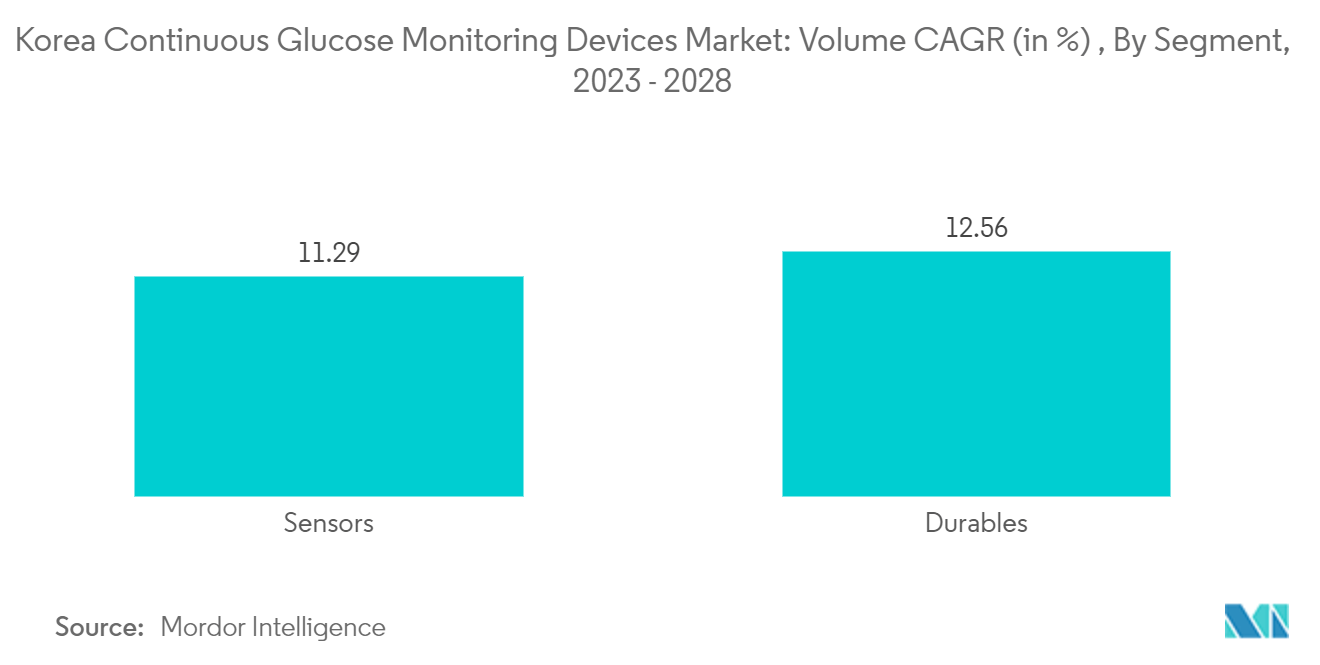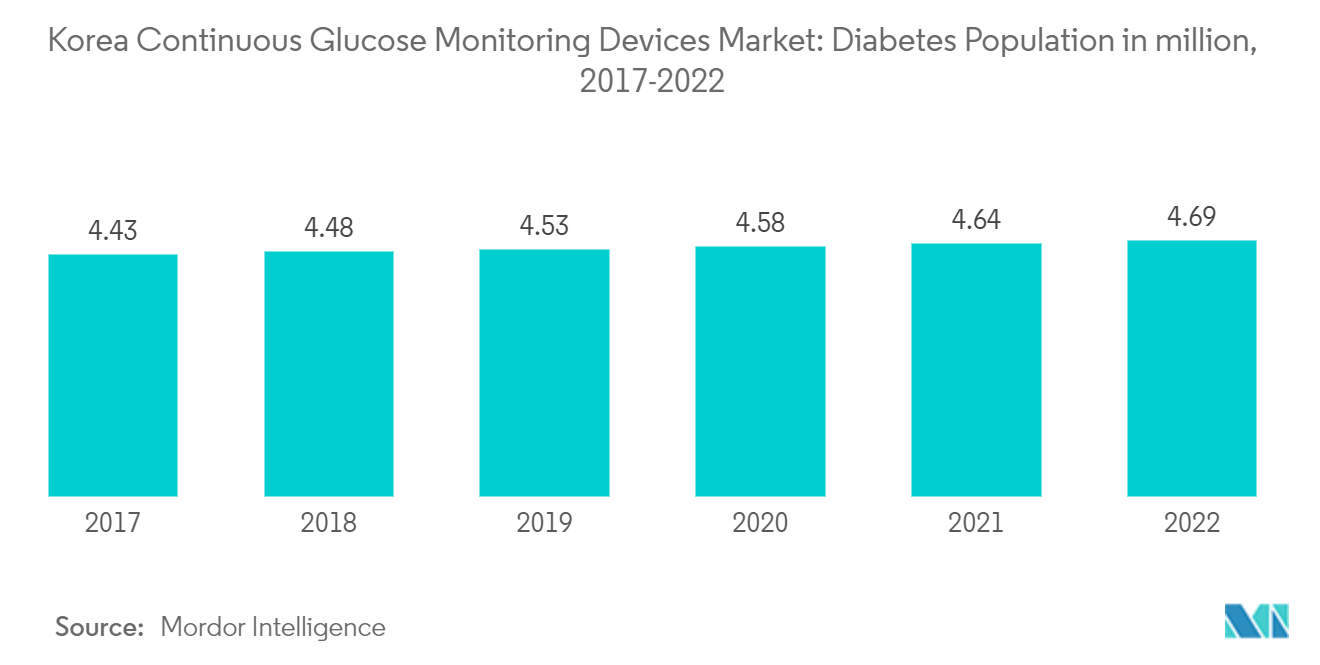Market Trends of Korea Continuous Glucose Monitoring Devices Industry
The Durables Segment is Expected to Witness the Highest Growth Rate Over the Forecast Period
A sensor's transmitter is what communicates blood glucose readings to a reader, receiver, or smartphone app. Devices known as receivers are those that collect data from transmitters and present the results on various user interfaces. According to the manufacturer, various CGM device components operate differently. These gadgets may need to be applied to the skin and are sometimes visible. Both disposable and rechargeable transmitter batteries are available. The market sector is anticipated to expand as a result of rising CGM device usage among diabetics, rising underlying causes of diabetes, market product availability, benefits of these durables, and increased awareness of CGM device use among Japanese consumers.
Korean NHIS is a single, compulsory health insurance system managed by the Korean government, providing healthcare coverage to almost the entire Korean population. The Korean NHIS database includes sociodemographic information, the use of medical services, medical claims, and health examinations. Koreans must register with NHIS as Type 1 Diabetics before requesting any insurance rebates, whether for consumables or CGMS. The patient can simply confirm this a day or two later by calling the NHI call center, but the patient's doctor will be able to do that for them. In order to apply for a refund for CGM Durables, Koreans needed an NHI refund form, prescription, cash receipt, and transaction statement.
Factors such as the increasing prevalence of diabetes, coupled with the increasing initiatives by public and private organizations, are expected to increase market growth in the country over the forecast period.

Rising Prevalence of Diabetes
The Type 1 diabetes population in Korea is expected to increase at a CAGR greater than 0.35% over the forecast period.
Type 1 diabetes and Type 2 diabetes are both chronic diseases characterized by high levels of glucose (sugar) in the blood. However, they differ in their causes, symptoms, and risk factors. Type 1 diabetes, also known as insulin-dependent diabetes, is caused by an autoimmune attack on the insulin-producing cells in the pancreas, leading to a complete lack of insulin production. It typically develops in childhood or early adulthood and requires daily injections of insulin to manage. Type 2 diabetes, on the other hand, is caused by insulin resistance (when the body can't effectively use insulin) combined with a decrease in insulin production. It is usually linked to lifestyle factors such as poor diet, lack of physical activity, and obesity and is more common in adults. It can often be managed through lifestyle changes such as diet and exercise, although some people with type 2 diabetes may also need medication or insulin therapy. Both types of diabetes can lead to serious health complications if not properly managed.
In January 2022, the Ministry of Food and Drug Safety (MFDS), South Korea’s medical device market regulator, planned to roll out several amendments to the country’s Medical Devices Act and has also expanded its list of devices eligible for electronic indications for use. Penetration of remote patient monitoring devices in the South Korean market supports local clinical research organizations (CROs) in their clinical research trials and ensures ease of monitoring, which facilitates the discovery process.
Diabetes is one of the country's most prevalent chronic diseases. Thus, the increasing prevalence of diabetes is expected to increase the adoption of continuous glucose monitoring in the country, which is expected to increase market growth over the forecast period.


